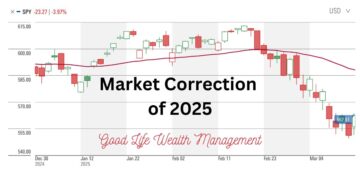Why do we own Preferred Stocks? US Stocks are expensive today. Bond yields are very low. Neither are terribly attractive. With any allocation, the expected return of the portfolio going forward is lower than historical returns. Risks, however, remain in the market. That’s not a dire prediction, just a statement of fact. We hope 2020 is another great year, like 2019.
The challenge for a portfolio manager like myself, is to diversify and find the sweet spot of risk and return. Because of today’s high prices of stocks and bonds, we include a 10% allocation to alternative investments. We’re looking for things which might offer a higher yield than bonds, but with less risk than stocks. And ideally, with a low correlation to stocks or bonds.
What is a Preferred Stock?
A Preferred Stock is a hybrid security. It has characteristics of both a common stock and a bond. It trades like a stock and pays a quarterly dividend. Like a bond, it has a fixed rate of return and a par value. With a Par value of $25, a company issues a Preferred stock at $25 and can redeem it at $25.
(How well do you understand bonds? Read: A Bond Primer.)
Historically, Preferred Stocks were “perpetual”, meaning that they had no ending date. More commonly today, Preferred Stocks are callable. Companies can buy back their Preferreds at $25 after a specific date in the future, most often five years after issue. Other Preferreds have a specific redemption date, when the company will buy back all of the shares.
Dividends of a Perpetual Preferred are typically qualified dividends. They qualify for the 15% tax rate on dividends. Other Preferreds, with redemption dates, may treat dividends as ordinary income, like bonds. As a result, we prefer to buy Preferreds in an IRA.
The Investment Rationale
We are interested in Preferreds which are callable or have a redemption date of less than 10 years. The reason is that, unlike perpetual Preferreds, these ones are trading for close to $25 a share. The ones we own have coupons of 4.75% to 7.25% or higher. We are generally paying a little above $25 today, but plan to hold until the shares are redeemed or called. (We can also sell them any day if desired, as they are liquid.)
You buy Preferreds for the dividend. They do not offer any growth. But that also means we have more stability. They tend to trade right around $25. And for those with a redemption date, we know the company will buy them for $25. So, any price volatility is likely a temporary fluctuation.
I am featured in this article “Are Preferred Stocks Preferable?” at US News & World Report from the summer of 2016. Since then, the relative attractiveness of Preferreds versus common stocks has improved significantly. Today, I think they have a place in our portfolios.
How to Invest in Preferred Stocks
Because Preferred Stocks carry the credit risk of the company, we prefer to purchase a basket rather than just one. Typically, we have a 5-6% allocation to Preferreds per household, and will buy at least five different issuers. That gives us some diversification of risks. Like any stock or bond, if the company goes bankrupt, you lose money. That’s why we diversify with a basket of small positions.
There are also funds and ETFs for Preferreds which offer a bigger basket. But, I prefer to pick the duration and companies I want. Also, we can save clients the expense ratio of a fund, often 0.50% to 1% a year. That would take a big bite out of your yield.
Preferreds are a niche investment and not a part of our core holdings. Given today’s market, we think they offer a nice complement to our traditional stock and bond holdings. Most advisors have never purchased a Preferred Stock, but I have been analyzing and trading the sector for over 15 years. We generally buy on the open market, but this month we have also participated in IPOs of Preferreds from Wells Fargo, AT&T, and Capital One. People want these yields. They’re no magic bullet, but Preferred Stocks are an interesting tool and we think a good fit for what our clients want.
If you’re looking for more than just a generic robo portfolio or a target date fund, let’s talk. Our Premiere Wealth Management Portfolios are for investors with at least $250,000 to invest.
Investment carries risk of loss of principal. Preferred Stocks are not guaranteed.







